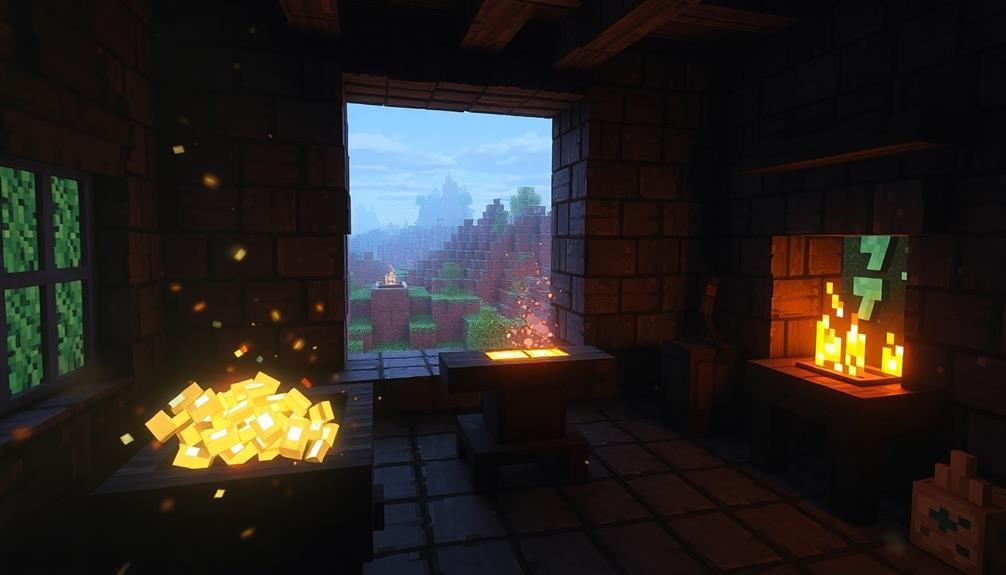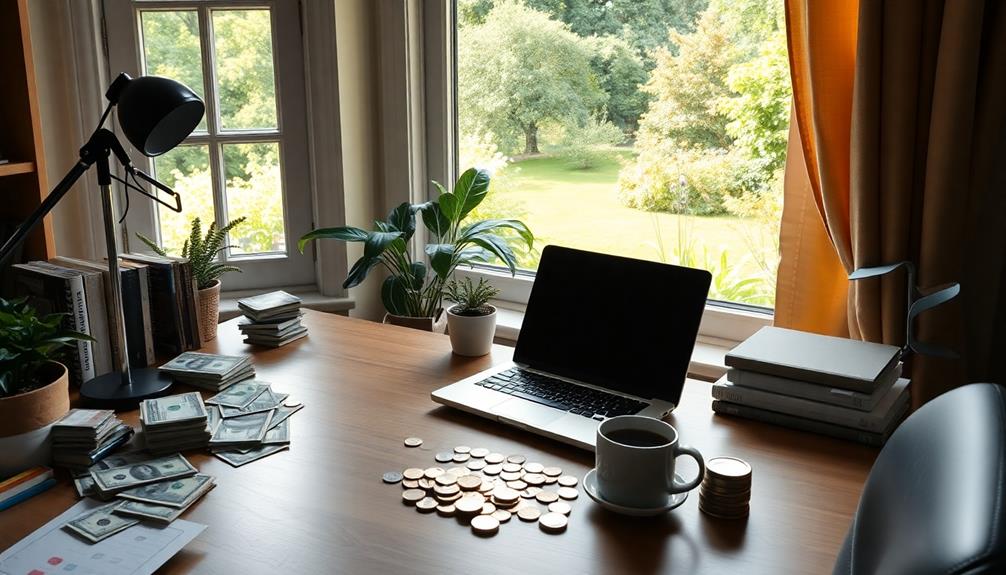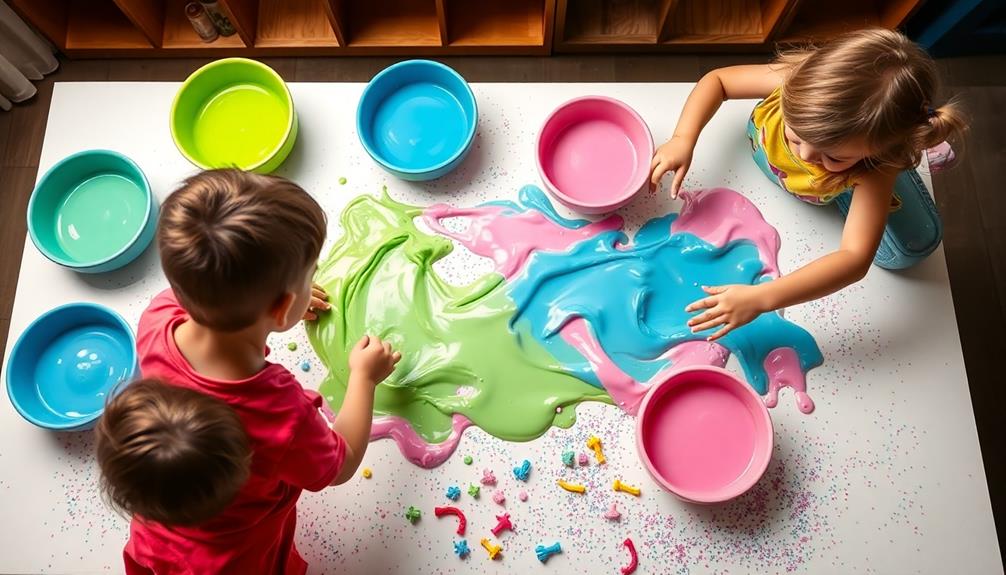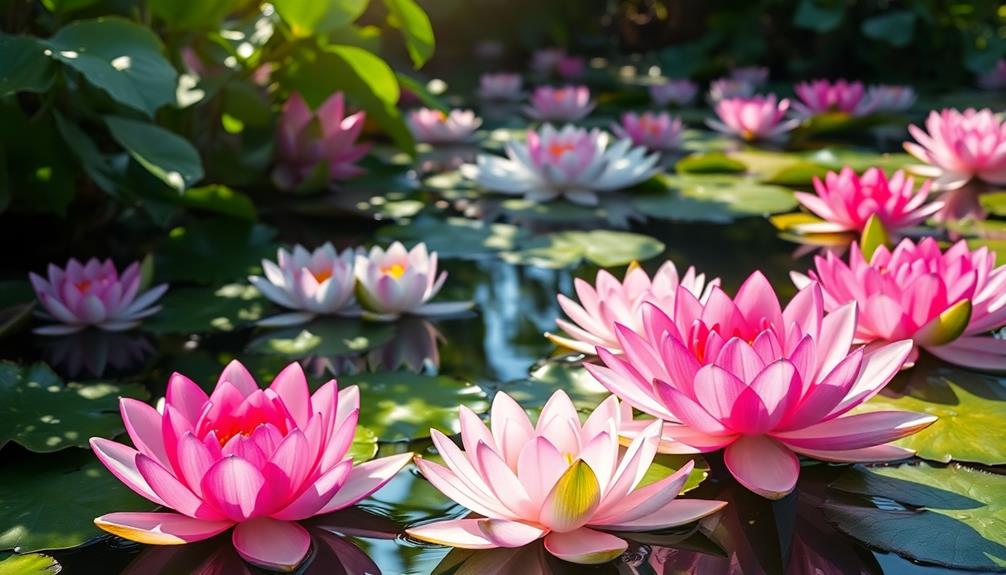To craft Netherite armor in Minecraft, you need a full set of Diamond armor and four Netherite Ingots. Start by collecting 24 Diamonds for the armor. Then, head to the Nether to mine Ancient Debris for Netherite Scraps and combine them with Gold Ingots to create the Ingots. Use a Smithing Table, which you can craft with Iron Ingots and planks, to upgrade each piece of Diamond armor. Simply place the armor piece, one Netherite Ingot, and an Upgrade Smithing Template in the slots. Your upgraded armor retains any enchantments too! Stick around to learn how to personalize your gear.
Key Takeaways
- Collect a full set of Diamond armor, requiring 24 Diamonds in total, before upgrading to Netherite.
- Mine Ancient Debris in the Nether to craft Netherite Scraps and combine them with Gold Ingots to make Netherite Ingots.
- Use a Smithing Table to upgrade each piece of Diamond armor with 1 Netherite Ingot and an Upgrade Smithing Template.
- Locate Upgrade Smithing Templates in Bastion Remnants to facilitate the armor upgrade process.
- Personalize your Netherite armor with unique Armor Trim designs and colors for cosmetic enhancement.
Items Needed for Netherite Armor

To craft a complete set of Netherite armor, you'll need specific items. First, you'll require a full set of Diamond armor, which consists of 5 Diamonds for the Helmet, 8 for the Chestplate, 7 for the Leggings, and 4 for the Boots.
Once you have your Diamond gear, it's time to gather your Netherite Ingots. You'll need 4 Netherite Ingots, crafted from 16 Netherite Scraps and 16 Gold Ingots.
Next, you'll need a Smithing Table. To create one, simply gather 2 Iron Ingots and 4 Planks. This table is essential for upgrading your Diamond armor to the best armor in Minecraft.
Before you can upgrade, however, make sure you find 4 Upgrade Smithing Templates, which can be discovered in Bastion Remnants, though they appear in chests with varying chances.
When you're ready to craft Netherite armor, use 1 Netherite Ingot along with an Upgrade Smithing Template for each piece of your Diamond armor. This process transforms your gear, giving you the powerful Netherite armor that offers superior protection in your Minecraft adventures.
Accessing the Nether

Accessing the Nether is an exciting step in your Minecraft journey, and it starts with crafting a Nether Portal. To create one, you'll need 14 Obsidian blocks arranged in a rectangular shape, 4 blocks tall and 5 blocks wide. Once you've built the frame, light it using fire, and you're ready to step through!
You can also find Ruined Portals scattered across the Overworld. Repairing these can save you some time in your quest to access the Nether.
However, before you venture in, make sure you're prepared. The Nether is a hostile environment filled with dangerous mobs, so pack plenty of food, weapons, and armor.
Once you've entered the Nether, your primary goal will be to mine Ancient Debris. This resource is essential for crafting Netherite Scraps, which you'll combine to create Netherite Ingots.
With these ingots, you can upgrade your Diamond armor pieces to Netherite armor, greatly enhancing your durability and protection. Remember, exploration is key, but tread carefully to gather materials safely while traversing this treacherous dimension!
Crafting and Upgrading Process
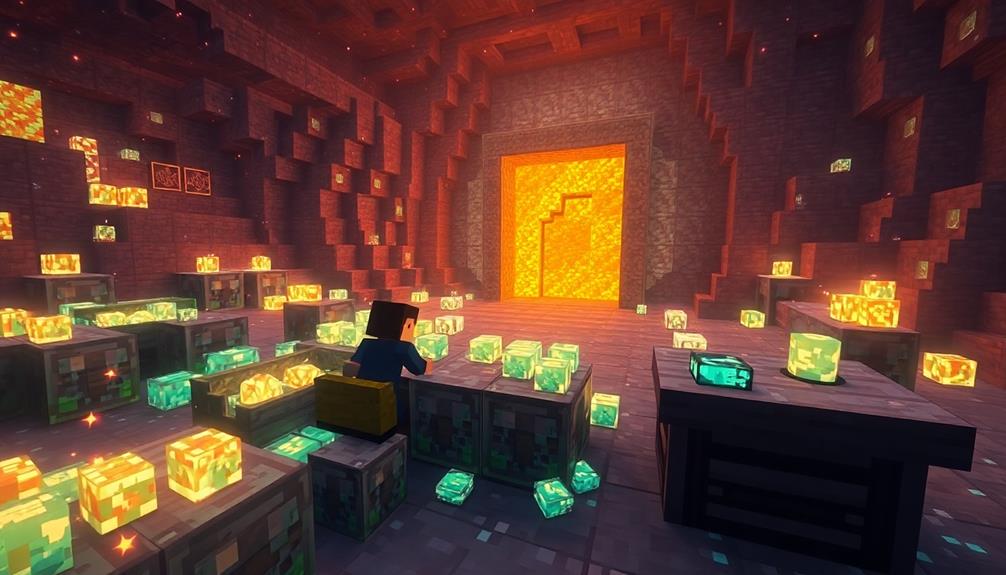
Once you've gathered the Ancient Debris and crafted your Netherite Ingots, you're ready to upgrade your gear. First, make sure you have a complete Diamond armor set, which requires a total of 24 Diamonds.
To start the upgrade process, head to your Smithing Table. You'll need a Netherite Upgrade Smithing Template, which you can find in Bastion Remnants' treasure chests.
At the Smithing Table, place the Upgrade Smithing Template in the leftmost slot, the Diamond armor piece you want to upgrade in the middle slot, and a Netherite Ingot in the rightmost slot. Each piece of Diamond armor requires one Netherite Ingot, so you'll need a total of four Netherite Ingots to complete a full set of Netherite armor.
The beauty of this upgrade process is that any existing enchantments and durability from your Diamond armor are retained when you shift to Netherite armor. This makes it an efficient way to enhance your gear without losing valuable enhancements.
Follow these steps, and you'll soon be equipped with a robust full set of Netherite, ready to take on any challenge in Minecraft!
Enchantments for Netherite Armor

Enchanting your Netherite armor can greatly enhance your survivability and effectiveness in Minecraft. One of the most valuable enchantments to take into account is the Mending enchantment. This allows you to restore durability to your armor by collecting experience orbs, making it perfect for long-term use.
Protection enchantments, which range from Protection I to IV, considerably boost your damage resistance against various sources of harm. This means you can face tougher mobs without worrying as much about taking damage.
If you often encounter explosive threats like creepers or ghasts, the Blast Protection enchantment is a must-have. It specifically mitigates damage from explosions, keeping you safer during those intense moments.
For players who enjoy exploring high terrains or making daring jumps, Feather Falling is essential for your boots. This enchantment reduces fall damage, helping you survive risky maneuvers.
Personalizing Your Netherite Armor
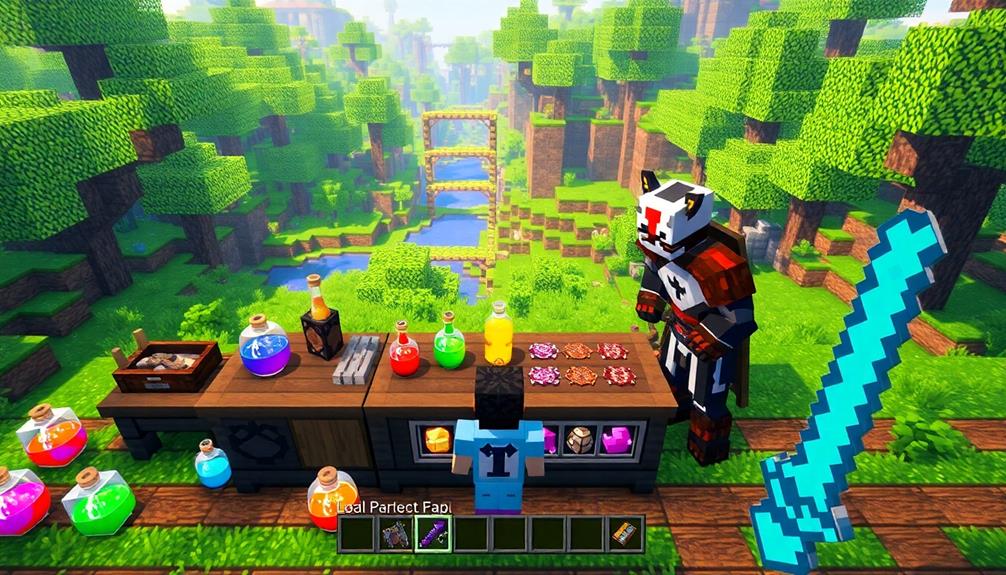
Personalizing your Netherite armor adds a unique flair to your gameplay, allowing you to express your style while exploring the vast world of Minecraft.
With the introduction of 11 unique Armor Trim designs in Minecraft 1.20, you can customize your armor to reflect your personality. Each armor trim comes with 10 different color options, providing endless possibilities for personalization.
To find the Armor Trim Smithing Templates, you'll need to journey into the Nether, exploring structures like Bastion Remnants and other locations. These templates are essential for applying your desired trims to your Netherite armor.
Keep in mind that while personalization enhances the aesthetic appeal of your armor, it doesn't affect its durability or protection stats; it's purely cosmetic.
If you're unsure where to start, numerous guides are available online to help you locate Smithing Templates and implement effective personalization strategies.
Frequently Asked Questions
How to Craft Netherite Armor?
To craft Netherite armor, gather Diamond armor first. Then, create a Smithing Table. Collect Netherite Ingots using Ancient Debris, and don't forget to find the upgrade templates. Upgrade your armor, and you're ready!
Do I Need a Smithing Template to Make Netherite Armor?
Upgrading armor's like climbing a mountain; it takes effort. Yes, you need a Netherite Upgrade Smithing Template to make Netherite armor now. Find it in Bastion Remnants, then you can upgrade your Diamond gear!
What Is the Crafting Recipe for Netherite in Minecraft?
To craft a Netherite Ingot, you combine four Netherite Scraps and four Gold Ingots in any arrangement on a crafting grid. This shapeless recipe allows you to create the ingots needed for upgrades.
What Is the Easiest Way to Get Netherite Armor?
To get Netherite armor easily, first gather a complete set of Diamond armor. Then, mine Ancient Debris, smelt it into Netherite Scraps, and combine them with Gold Ingots to create Netherite Ingots for upgrading.
Conclusion
In Minecraft, crafting netherite armor transforms your gameplay from vulnerable to invincible. While diamond armor shimmers with promise, netherite armor shines even brighter, offering unparalleled durability and knockback resistance. As you explore the Nether, you'll realize that the journey to upgrade your gear reflects your growth as a player. So, don't just settle for ordinary; embrace the extraordinary and personalize your armor. After all, in a world of blocky dangers, you deserve the best protection possible.

